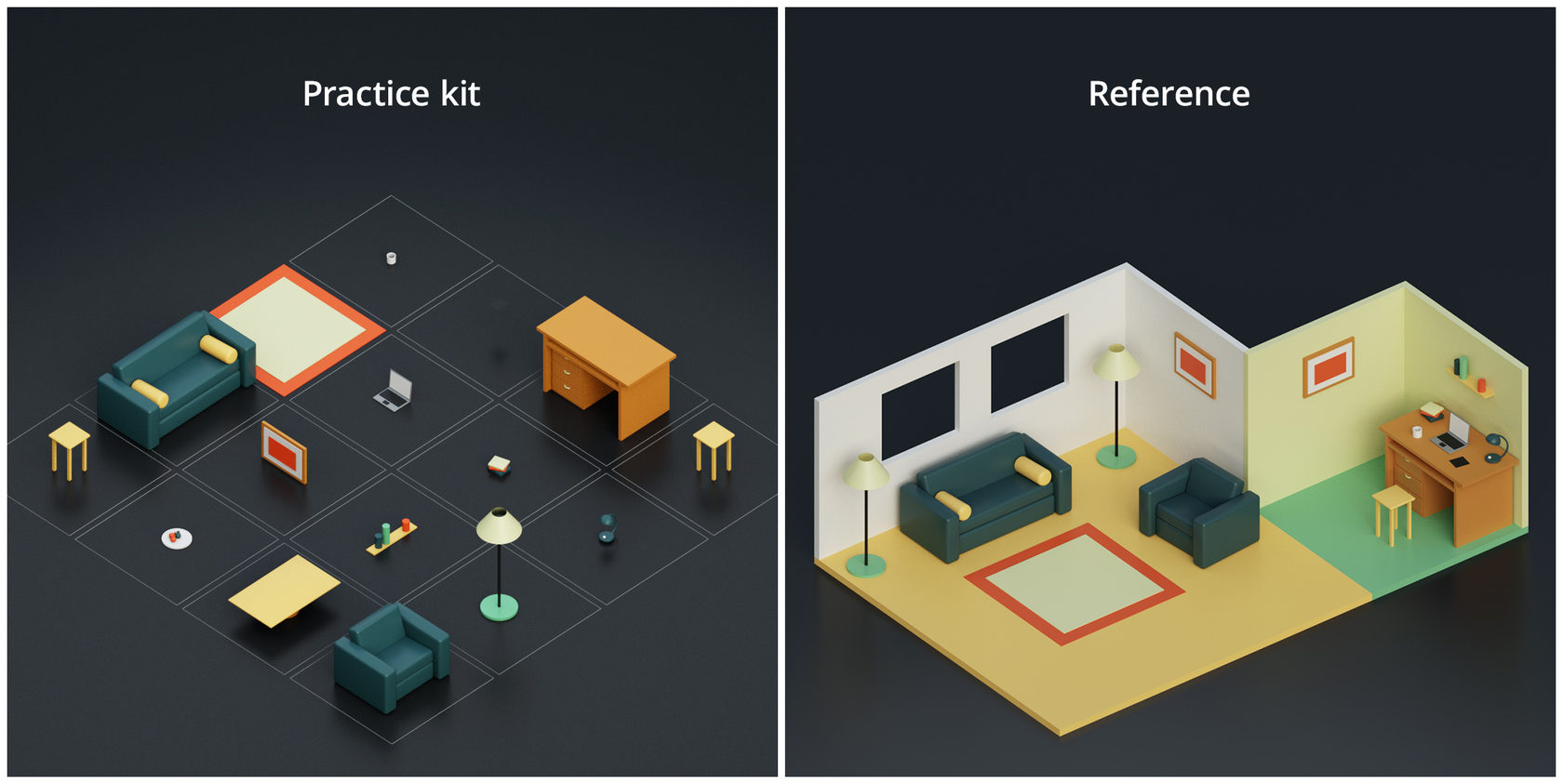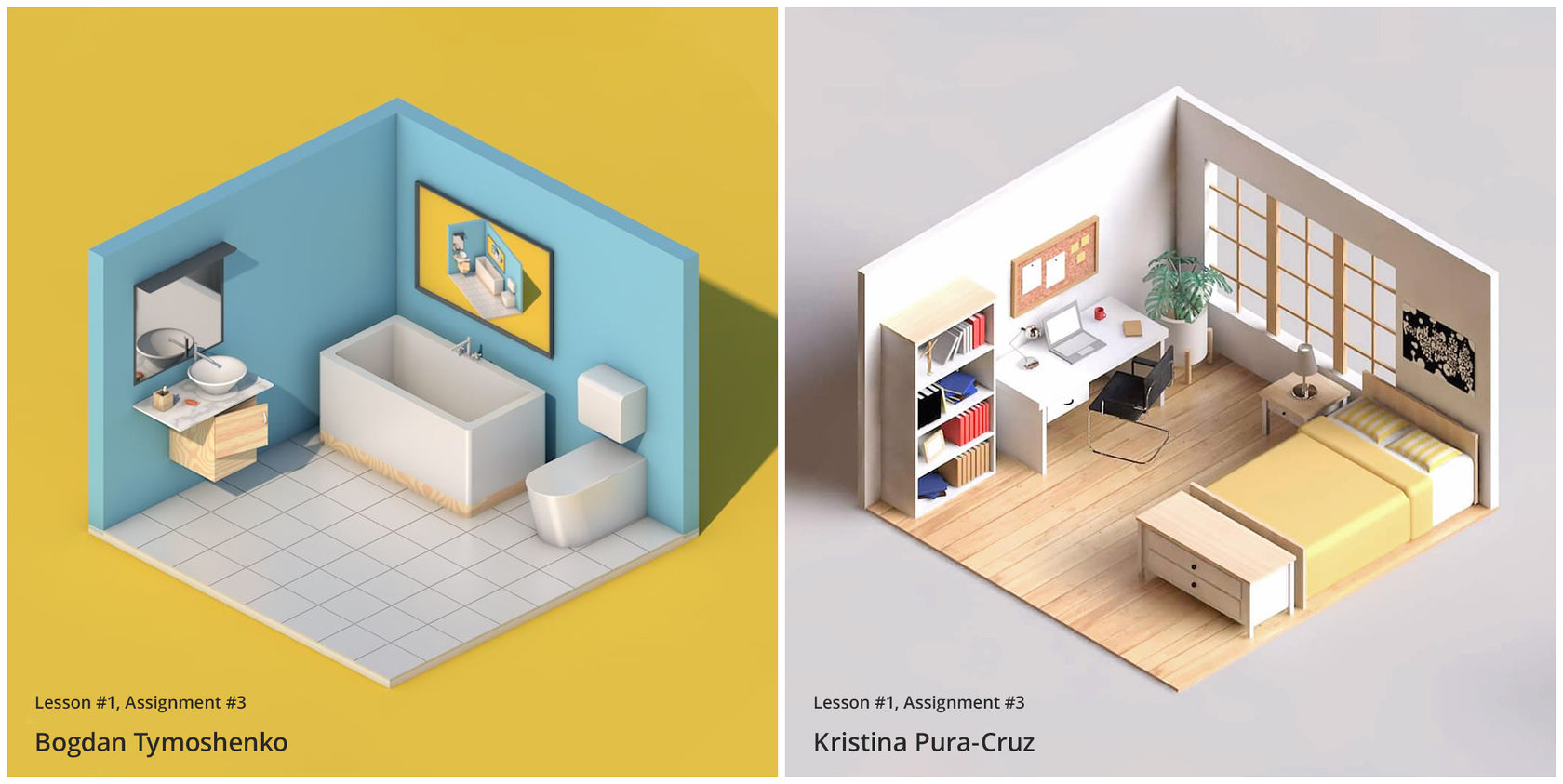When deciding on taking an online course, some of us may be motivated by the pure desire to learn something new, however, let’s be honest here, we mainly choose it to bring our professional skills to a new level and get closer to our dream job. In the motion design world, people are hired for their skills, and the best way to show the skills is by building up a cool portfolio. It could get you thinking, “A real comprehensive portfolio just by taking an online course? One needs to spend years and create tons of projects to build it!”
Luckily for you, there’s a way to get up to 180 shots from one single course. And it can actually be done in a couple of months’ time.
Unlocking Success: A Guide to Maximizing Your Online Learning Experience
The head of Motion Design School, Vladymir Liubarskiy, will guide you through the whole process of becoming a pro from a newbie level based. He shared the personal struggles he faced when learning Cinema 4D and his practical tips on how to get the most of online course home assignments.

Check our Cinema 4D Journey course.
1. Never Skip Home Assignments
As simple as it sounds, the first step to creating a great portfolio is basically being a good student, that is doing your home assignments. Moreover, it’s the only way to actually build your skills. These tasks are designed to, on the one hand, give you an opportunity to practice what you’ve learned during the lesson, but apart from that they provide you with space for growth. Every home assignment consists of at least one task and is usually divided into different levels of complexity.
For instance, for one lesson of our Cinema 4D Journey course, we created a home assignment consisting of three levels.
On the first level, students get a picture of a room and 3D models of furniture. The task is quite simple: they need to arrange the models based on their position in the picture.

On the second level, we will recommend to try recreating every model from the example on your own and then arrange them into a finished composition or create a new interior setup:

On the third level, the students get a really challenging task to re-create in 3D their own room in which they are now:

What we see here is gradually increasing difficulty of the tasks. On the first level, you work with something already pre-made, on the second one you have a reference, and on the third, and that’s where all the fun starts, you create something totally new.
Each level follows the previous one. The logic behind it is that different students have different initial knowledge of the subject and for more advanced students the first-level tasks may seem boring. And if you don’t find something challenging and motivating enough, chances are you’ll just skip it and miss out on the opportunity to practice the skills you need to master.
2. Get More Practice
There’s one more way to learn more from each lesson and do it more effectively. This is doing your home task in stages.

Stage One: You do exactly what the author of the course expects you to do, just to make sure it can actually be done.
Stage Two: You add minor changes to make the picture look different from the one in the lesson and from what others are doing. You can use different materials or add some decor, for example.
Stage Three: Go to the next lesson, learn something new and then go back to the home assignment from the previous lesson and add what you have just learned to it.

3. Define Your “Why” and Set Clear Goals
Before embarking on any online course, take a moment to reflect on your motivations. What is your “why”?
Clearly defining why you are taking a particular course can serve as a compass throughout your learning journey. Are you seeking career advancement, acquiring new skills, or pursuing personal interests?
Once you’ve established your purpose, set specific and achievable goals. These goals will provide direction, keeping you focused and motivated.
4. Allocate Dedicated Time and Space
The flexibility of online learning can be a double-edged sword. While it offers freedom, it can also lead to procrastination. Establishing a routine and dedicating a specific time and space for your studies can create a structured learning environment.
Treat your online course with the same level of commitment as you would an in-person class. This not only enhances focus but also reinforces the importance of your educational pursuits.
5. Embrace Collaboration and Accountability
Learning is often more effective when it’s a collaborative effort. Schedule regular virtual meetings with a friend or fellow learner enrolled in the same course. This serves multiple purposes.
Firstly, it provides an opportunity for discussion, allowing you to deepen your understanding of the material.
Secondly, it introduces an element of accountability. Knowing that someone else is progressing alongside you can be a powerful motivator, prompting you to stay on track and meet your learning objectives.
6. Document and Share Your Learning
As you progress through the course, make it a habit to document your learning journey. Create a digital or physical journal where you can jot down key concepts, insights, and questions. Not only does this reinforce your understanding, but it also serves as a valuable resource for future reference.
Additionally, consider sharing your insights on online forums or social media. Engaging with a community of learners can provide fresh perspectives, foster discussions, and expand your understanding of the subject matter.
By following this approach you get three different pictures after every lesson: the one expected from you, the one with some adjustments and the one which is totally yours. If we take into account that every lesson has several levels of tasks and they are different, you end up with 3 to 9 shots. If you follow this rule systematically, you get from 60 to 180 works by the end of the course. After completing this huge number of tasks, you can’t fail to reach a certain level of mastery, and this level will be obviously higher than of those who only do required tasks and end up with 20 shots.
This doesn’t sound like rocket science, right? Still, the approach you choose right at the start of an online course plays a crucial role in staying motivated throughout the learning process, in the depth of the skills you can acquire and even in boosting your creativity.
Do you want to take it further?
Check out more tips and life hacks in 7 Steps to Turn Your Homework into a Huge and Unique Portfolio.
Want to know more about animation?
Top 5 time-saving Extensions for After Effects
If you animate your works in After Effects and still don’t use the extensions I’m both happy and sad for you. Read this short article till the end and your life will never be the same again.1. OverlordPreparing source files for animation is one of the most time-consuming phases of the animator’s work. Cutting characters […]
Blending Modes in After Effects
In this Very quick but very useful, we will know how to use blending mode. Just use difference mode and here you are ?Blending Modes in After EffectsIn Adobe After Effects, blending modes are used to control how different layers or elements interact and blend with each other. They determine how the colors, brightness, and […]
4 Advanced After Effects Expressions Made Easy
Denys is the Motion Design School’s script wizard and the author of the Expression Trip course. In this article, he will share how expressions can be used to create more complex animation.Popular expressionsAs you’ve learned from the previous article on top 3 After Effects Expressions to simplify your workflow, programming in After Effects, besides being totally not […]




